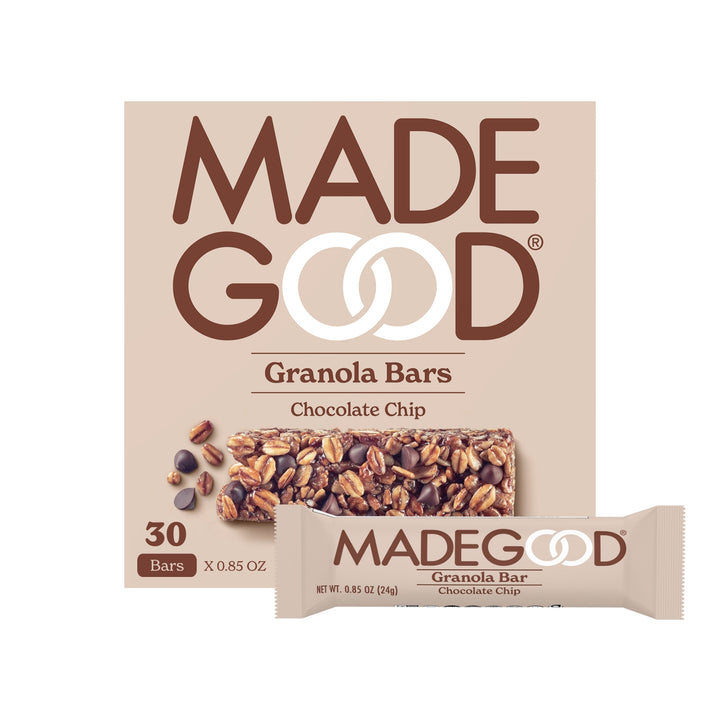Allergies Got You Down? Here are some ways to cope.
madegoodfoods-us Admin

31 January, 2020
Are you suffering from allergies and looking for foods that don’t give you hives or the sniffles? Don’t despair. The dramatic increase in people suffering from allergies has spawned a raft of online recipes, cookbooks, restaurants and grocery stores offering allergen-free foods and meals. Walk through most large grocery stores today and you’ll find products labelled vegan, peanut-free, soy-free, dairy-free – and whole sections devoted to gluten-free products. You’ll also be pleased to know that the folks at MadeGood have created a line of organic granola snacks with you in mind. All their products are free from the eight most common allergens and are produced in a dedicated peanut- and nut-free facility
More than 170 foods are known to cause allergic reactions. The most common allergy-causing foods are milk, tree nuts such as cashews and pistachios, soy, wheat, fish, and shellfish. An allergy is generally defined as a physical reaction to a substance that doesn’t have an effect on the average individual. Allergic reactions occur when allergens found in food interact with antibodies in the blood, triggering the release of chemicals that produce symptoms. The reaction may manifest as a runny nose, itchy eyes, sneezing and/or skin rashes. For some people, however, a life-threatening allergic reaction may result in labored breathing or dangerously low blood pressure, a condition known as anaphylactic shock.
According to the U.S. Centers for Disease Control and Prevention, the percentage of children with food allergies rose 50% in just 14 years between 1997 and 2011. A few theories have emerged to account for why children are becoming more prone to allergies. The ‘hygiene hypothesis’ theorizes that modern living’s obsession with cleanliness limits children’s exposure to dirt, causing their immune systems to mistake food protein for invading germs. Another theory is that environmental changes are damaging the immune systems of young people.
Children who suffer from allergies to milk, eggs, wheat or soy may lose them as they age. However, allergies to peanuts, tree nuts, fish and shellfish usually last a lifetime. There is no cure for food allergies, and avoiding the allergy-causing food is the only reliable solution.
Here are a few tips to help manage food allergies:
1. Plan ahead if eating out. Call the restaurant to find out if they are equipped to handle food allergies. Ask which menu items would be suitable or request a special meal.
2. When shopping for groceries, read labels carefully: federal law requires food companies to say when any of the eight most common allergens may be present.
3. If you will be away from home for more than a few hours, carry safe snacks with you. Fruits and vegetables are great portable options. Or pick up some snacks from MadeGood. Their products are all free of the eight common allergens – soy, wheat, fish, shellfish, dairy, egg, sesame as well as nuts. They also use only organic and non-GMO Project-verified ingredients.
4. When cooking for someone with allergies, make sure any potential allergens are removed from the cooking area. Wipe down counters and wash utensils and pots with hot soapy water to remove any residue from potential allergens. Or, consider having two sets of cooking and eating utensils.
5. Cook from scratch whenever possible so you can control what goes in the food. And, keep it simple by choosing easy-to-prepare recipes you know your family will like.
Sources:
https://www.foodallergy.org/facts-and-stats
http://www.neocate.com/blog/allergies-genetics/
http://www.cnbc.com/2016/09/09/allergies-are-on-the-rise-and-here-are-three-reasons-why.html
Author: Karen Gilman is a Registered Holistic NutritionistTM and the founder of www.nutrilicious.ca. When not working with families with vegetarian children, you can find her blogging about food or in the kitchen baking up healthy treats for her family.
No comments
Hungry for More?

Stay Informed
Join the MadeGood Movement!
Sign up for updates on our impact, new products, and exclusive offers!



















